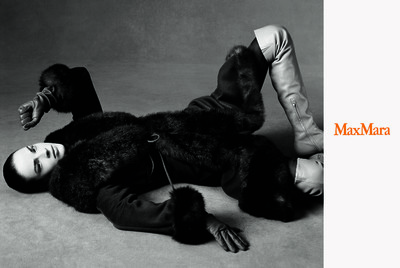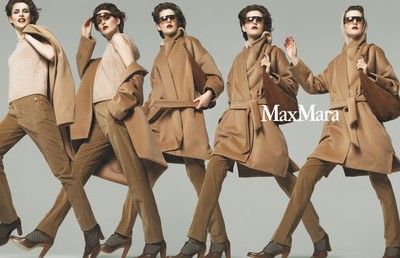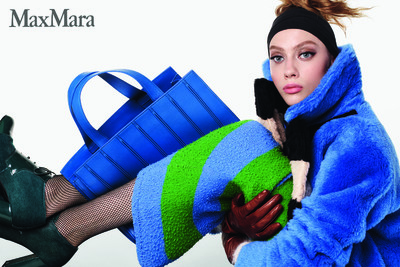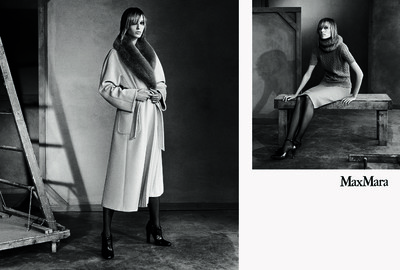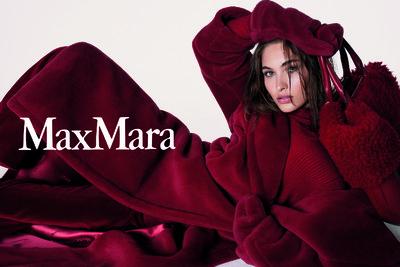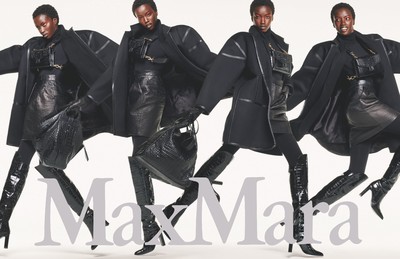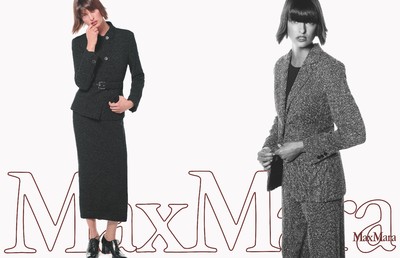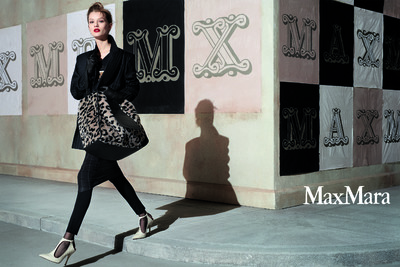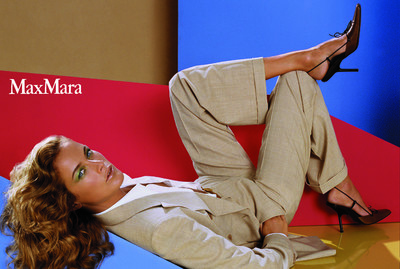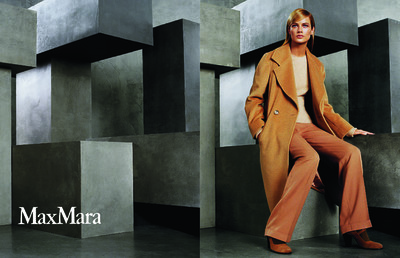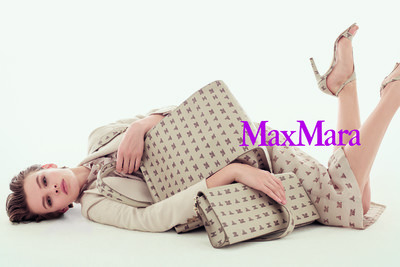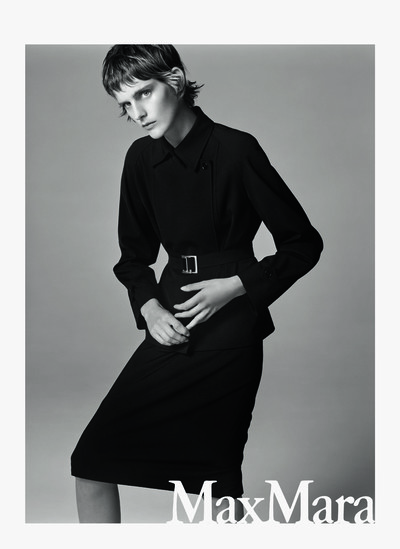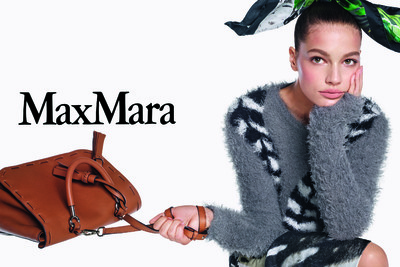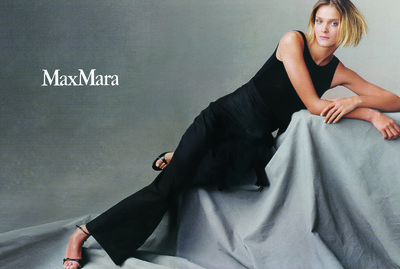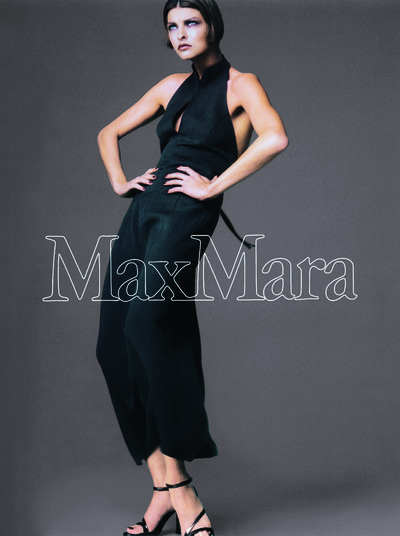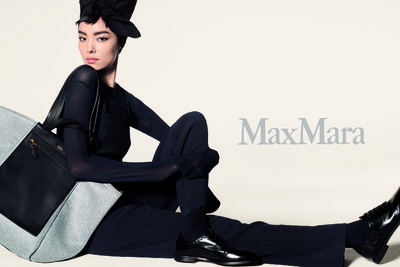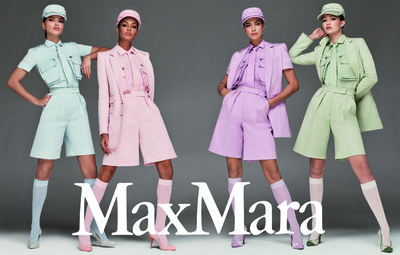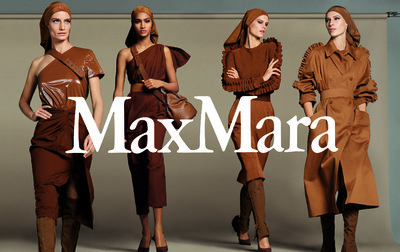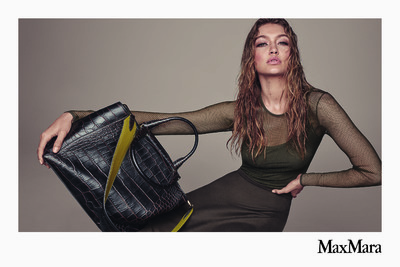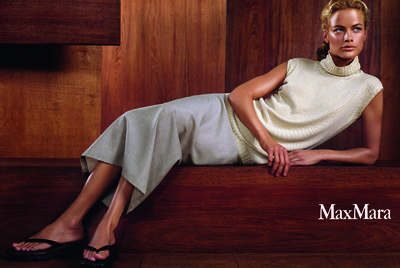Why Max Mara’s ongoing Steven Meisel campaigns epitomise the Italian brand’s mantra of ‘evolution not revolution’.
Interview by Thomas Lenthal
Why Max Mara’s ongoing Steven Meisel campaigns epitomise the Italian brand’s mantra of ‘evolution not revolution’.
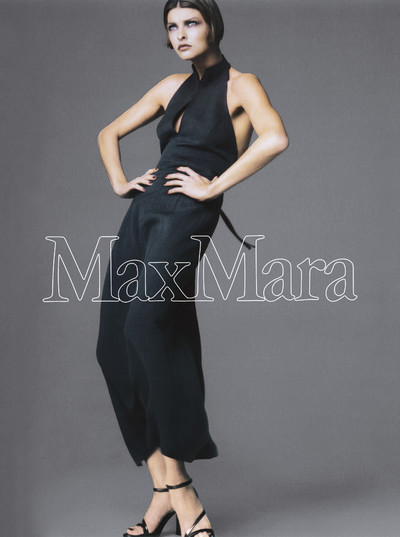
Change is fashion’s pulse, the force that drives engagement, interest, and most importantly, sales. Except, it seems, at Max Mara. In an era when high-profile designers are appointed to create headline-grabbing fashion ‘revolution’, the Italian brand, founded in Reggio Emilia by Achille Maramotti in 1951, has followed its own path, guided by an idea too often dismissed in fashion: consistency. The brand’s globally successful aesthetic of tailored, yet comfortable luxury wear in rich fabrics and a limited palette reveals this constancy of purpose, which can adapt to the moment, while remaining resolutely true to its essence.
Despite being shot by different photographers over the decades – from Richard Avedon to Sarah Moon to Paolo Roversi – Max Mara’s advertising has always reflected this slowly evolving stability, choosing to demonstrate its contemporary relevance not through modish concepts, but rather by casting models – Anjelica Huston, Christy Turlington, Linda Evangelista, Gigi Hadid and Joan Smalls – who embody both the Max Mara woman and their time.
Over the past two decades, one photographer has best represented this consistent visual messaging and perfectly calibrated casting: Steven Meisel. Known for his long-standing relationships with magazines (he has shot over 350 covers for Vogue Italia) and brands (Prada and Versace), he has worked with Max Mara since 1997, creating campaigns that always remain fresh thanks to his visual sensitivity and the respect he pays to the clothes. System spoke to Giorgio Guidotti, Max Mara’s head of global communications, who himself has been at the brand for 32 years, about its ethos of evolution not revolution and how Steven Meisel always delivers.
Thomas Lenthal: What does advertising mean at Max Mara? Are there specific long-established visual codes that you are still following?
Giorgio Guidotti: Since day one back in the 1950s, one of our key principles has been that we make timeless, democratic fashion. So the narration around the brand has always been around the product, and the timeless and ageless woman wearing it. It is very important for us to be real; we make real clothes for real women – that is one of our working mottos. So what we try and do in our advertising campaigns is feature that real woman. Sometimes the style is stronger or less strong, or more or less fun, maybe one season she is a little sexier, another season a little sportier – but behind the styling, it is always that woman.
That seems to apply to the actual advertising images, too. They are incredibly consistent over the past 30 years. There’s a stability in Max Mara’s message, which is pretty remarkable.
In the company, we always say, ‘We don’t want to be hot, because what is hot then becomes cold.’ We are famous for our timeless designer pieces, so this is another aspect we keep in mind for our advertising campaigns.
Working with great photographers over the years is another consistent aspect of the Max Mara brand story.
I’ve been here 32 years and the brand’s owners have always given me lots of freedom to work with the best art directors, photographers and agencies in the business. That’s been my big chance. Max Mara was already working with big photographers when I arrived and the first ones I worked with were Richard Avedon, Peter Lindbergh and Paolo Roversi in the late 1980s, early 1990s.
When did Max Mara begin working with Steven Meisel?
The very first time he worked with us was over 30 years ago, an advertorial for Lei for an iBlues collection of workwear and separates. They are beautiful images and so funny, like a fairy tale of girls in a garden. That was the first time his images became part of Max Mara history, but that was before my time. The first time he worked for the main line was with Linda Evangelista for the Spring/Summer 1997 campaign. It was great: this beautiful shot of Linda in a pant suit. She exuded freshness and glamour; it was effortless for her. Steven has never been afraid to do classic and he’s never wanted to change the character of the brand; he really wants to express the clothing as best he can. Those very first images are so amazing. They are so ‘now’ and modern and timeless, and on a great model. Sometimes we think we should just buy the copyright and use them again!
‘At Max Mara, we always say to ourselves: ‘We don’t want to be hot, because what’s hot will inevitably become cold before too long.’’
You’ve worked with him for so long now. He’s like this presence who comes and goes, but is somehow always around Max Mara. He has really helped define Max Mara in a very powerful and successful way.
We have done over 20 campaigns with Steven. He has such a great sense of fashion and style and modernity, yet he’s actually a little bit like Max Mara – he’s timeless. He understands the clothes like no one else. Some photographers can be excellent, but they don’t care about the fashion, just the image. For us, the fashion is so important in the narration – and he knows that and he knows how to make it now. He always wants to see the clothes in advance and there is always a little back and forth with the casting, but we trust him. There is never a drama though because he is so great with casting. We always get the best models, not because he is powerful in the industry, but because he makes such precious suggestions.
And so how is it from campaign to campaign with Steven Meisel? Do you go to him with a very defined concept?
We communicate beforehand; we never go on set with the clothes and say, ‘Let’s try to find something.’ We always choose the fashion first, more or less, define the look, and then just before the show, we build the concept, which he respects. Steven really works on the look of the girl, the make-up and the hair.
You are on set, right?
Yes, Steven is very private and very few people are allowed on set. It is basically his team, hair and make-up, the stylist, and one or two clients. No more. And I am always very respectful. I don’t go on the set and say, ‘Let me fix the jacket or can we change this or that?’ Everything has been decided pretty much before, so once you are there, the days are not too long. He is very organized, so changing an idea while on set is not really what you do with Steven. We never come back from New York with something we didn’t expect for Max Mara.
How many images do you shoot on a campaign these days with Steven?
We do five in a one-day shoot.
It’s very fast.
Once he finds the look, he is fast. He goes for perfection; that is what he likes. It might take five hours to get the look, but then he is very fast once he gets the look and the girl, once he finds what he likes and what we like.
Quite often, you use the group shot with Steven. Is there a reason for that?
It’s because Max Mara is for every woman. The next campaign in September is also a group shot with girls of different ages; it is very nice. The idea of the show was almost like an aristocratic British family, so we did a little bit of that, but only women. The men were probably outside hunting!
Let’s discuss the models. When the general aesthetic and approach to the campaign is so remarkably consistent, as it has been over the decades, then the variable that best defines any given era is the model. What makes the Max Mara woman at any given time?
Max Mara has always worked with the best models: from Angelica Houston before my time to Linda and Christy [Turlington], Carla Bruni – always the very best!
So what makes a model Max Mara? Is it hair, make-up and styling that allow her to become that Max Mara woman?
Yes, but also because the models we use have a timeless beauty. Today it is all about diversity and I totally agree with that, so we have continued with timeless beauty, but in a more diverse way.
What about stylists?
With Steven we’ve worked with different stylists. The first was Barbara Dente, a legendary stylist from the 1980s and 1990s. She worked regularly with Mapplethorpe – he took a funny portrait of her as Olive Oyl from Popeye – and she was the person who connected us with Steven. She was really a great stylist. We also worked with Brana Wolf, Lori Goldstein, and then Carine Roitfeld for a few seasons.
What are the metrics of success for a Max Mara campaign? How do you establish that this was a great campaign or not so much?
If we sell those clothes, that’s a success. That is what the campaign is for, to confirm a brand and to help the company. The campaign is really a chance for us to shoot the physical product. We are very consistent with our colour palette – camel, brown, a touch of red, these are the colours of Max Mara – and using that, plus the style of the woman, there is a danger of it becoming a little dusty. We always want to be modern, so the campaigns are about making Max Mara contemporary, yet timeless, and appealing. Also, we are an Italian brand and over the years we’ve found that Asian customers, for example, don’t want to buy a product for the Asian market, they want to buy the brand as it is: Italian. So these campaigns are international, never shot with just one market in mind.
‘Those earliest campaigns are still so ‘now’ and modern and timeless. Sometimes we think we should just buy the copyright and use them again!’
That’s the beauty of fashion photography: it can speak to everyone around the world – it doesn’t require words.
Exactly, and again it reflects the products. Some brands have specific products for specific markets, but we don’t do that. Of course, sizes will change and maybe some countries will buy more of one colour, but the bestsellers are the same all over the world.
What’s your take on the future? Are you starting to explore other avenues for advertising?
Beautiful images are going to be seen on different media; it doesn’t matter if it is digital. Of course, there’s all the collateral material now, which we never thought about producing until five or six years ago. You really have to think about other channels and build that more into your production; that is important now. Being a big company with strong shoulders, we can afford to do the full 360 degrees, so we should. The last video we did with Steven Meisel, with all the girls dancing, I think is instantly iconic, and personally, I’m really excited that that campaign by Steven can be seen by the readers of Grazia and also seen by a million viewers on our Instagram accounts too. That’s just very exciting. To build a strong image, you still need the quality shoot as part of the 360 degrees. You can have a lot of those small assets, but you need the big statements, too – and that is why there are still fashion shows and why there is still beautiful advertising.
